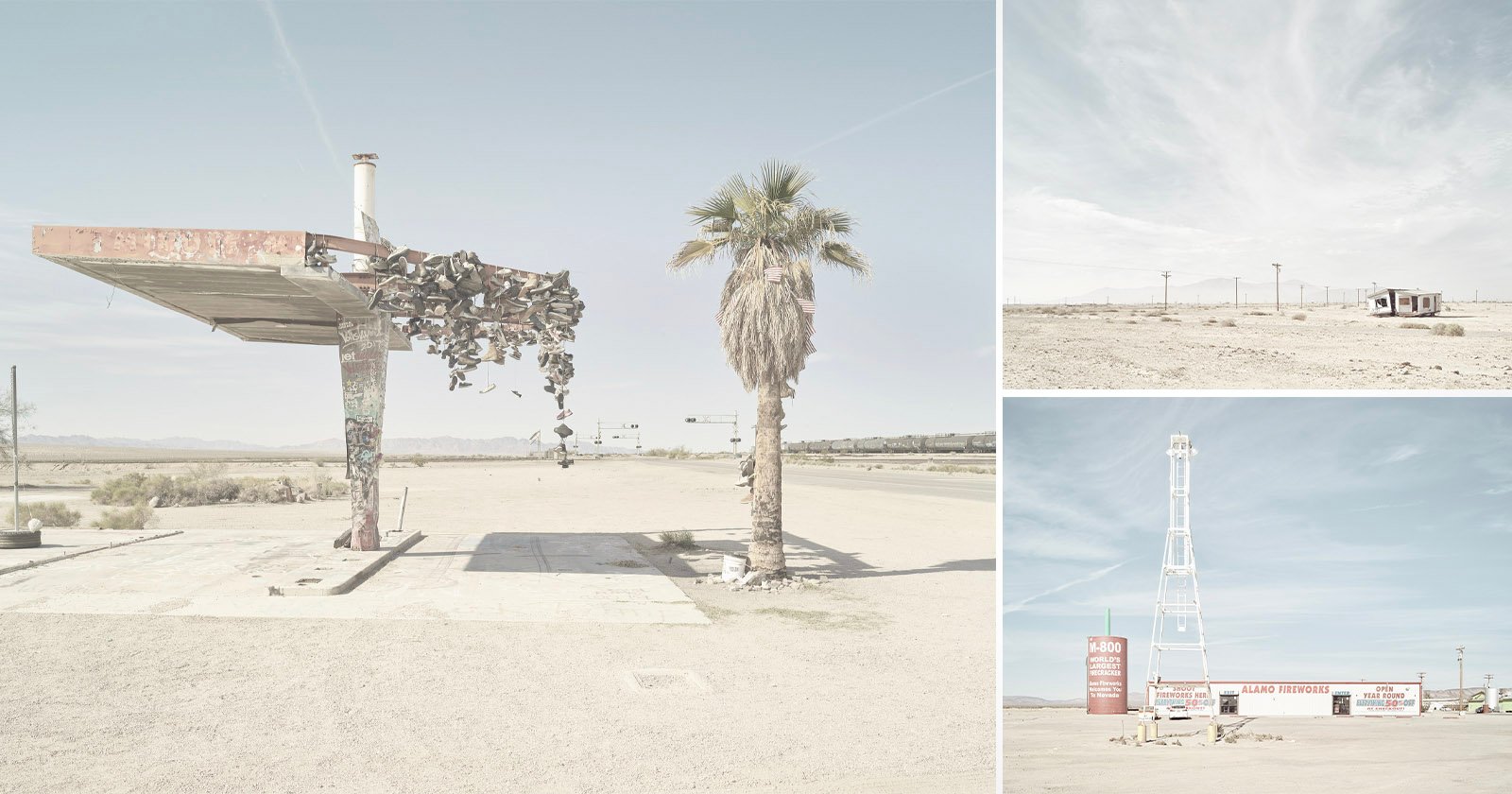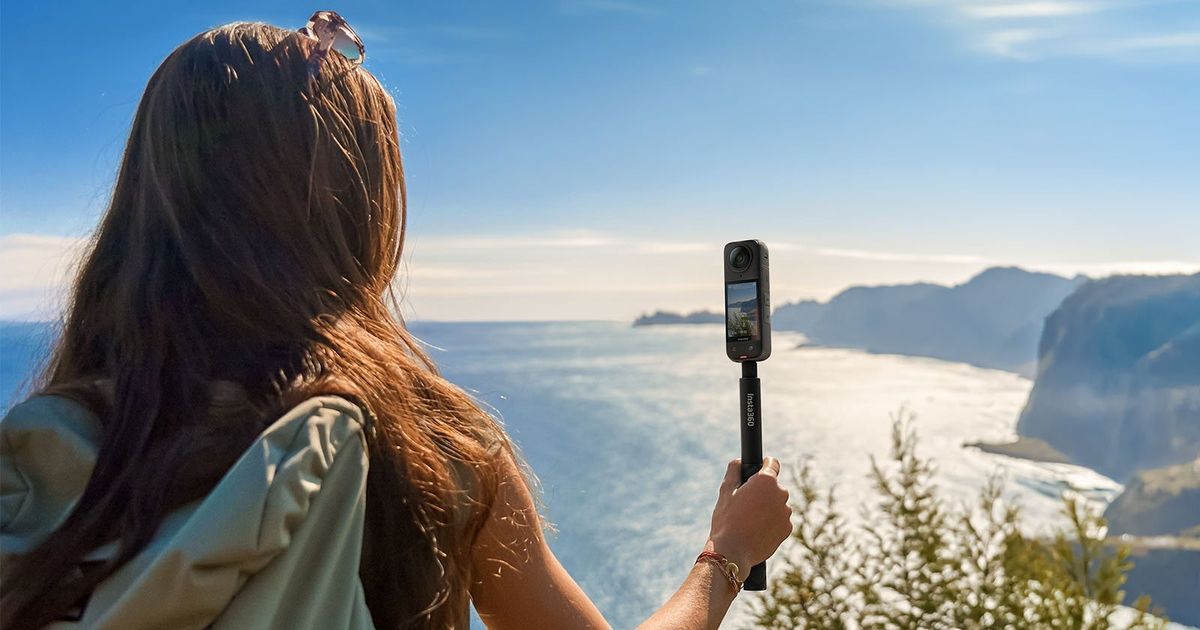
![]()
Guy Havell’s “Back Roads of Americana” is a landscape fine art photo series that features bright, sparse, uninhabited desert landscapes across several states in the American West. It is hauntingly gorgeous work.
Havell describes the project as a visual anti-aesthetic that portrays an uncompromising, unromantic, unglorified view of the man-altered American desert landscape, and that it is an intentional rebellion against modern landscape photography that is motivated by social media success.
In the spirit of the New Topographics movement, this project was a tribute to the ordinary with the underlying narratives of isolation, desolation, and abandonment.
Below is Havell’s first-person account of how he went about capturing the series and is brought to you courtesy of PetaPixel’s partnership with ELEMENTS Magazine. ELEMENTS is the new monthly magazine dedicated to the finest landscape photography, insightful editorials and fluid, clean design. Use the PETAPIXEL10 code for a 10% discount off the annual subscription.
The “Back Roads of Americana” project covered several states including Nevada, California, Arizona, Utah, Texas and New Mexico. As a built- environment photography project it explored the less-visited expanses of the Mojave, Sonoran, Chihuahuan and Great Basin Desert regions of the American Southwest. I covered 10,000 miles in three trips from my home country of Australia, and although I’d photographed much of the North American scenery before, this was the beginning of a reinvigorated love affair with the American landscape, albeit the human-altered, Anthropocene landscape.
![]()
I based my decision in October 2017 to take on a long-term personal project on the less well-known Western Desert of the US. It was perhaps not a new or original concept, and nor did it have to be, because from a personal perspective it was important for me to evolve from the beautiful, popular landscapes I’d done for many years and search for something different – the ugly, the unpopular and in many cases, the unlikeable. This project was more documentation of the landscape rather than glorification, and was a search for more meaningful subject matter without the pretty aesthetics. I was not only recognizing what some have described as the real-world anti-landscape, but also the simple yet quirky architecture of its bones.
![]()
Of course, we all know America has beautiful natural scenery but I wanted to change direction and delve headfirst into the abandoned and neglected worlds sprawling far out from the freeways into wastelands. I was looking for unusual subject matter with a substantial narrative, and I wanted to document a visual anti-aesthetic that portrays an unglorified view of the human-altered desert landscape. In the spirit of the New Topographic movement of the 1970s, I wanted to rebel against the mainstream and pay respect to the ordinary world in my own way. I also wanted to do my small part in raising awareness of some serious environmental problems that governments are reluctant to act on.
![]()
There is so much to photograph in the American Western Desert, good and bad, much of which is history preserved in time which transports you into another era to imagine just how tough and resilient these people were to survive in extreme, remote environments. I spent a lot of time alone in the historic towns walking, observing shapes and form, and admiring the mid-town architecture which was not complicated but intricately detailed. Life was simple back then, often reflected in the modest housing so reminiscent of small-town America. The small towns I used to drive straight through without a glance on my way to “chasing the light” had now become the main focus, more akin to a passion. The towns were more interesting than they first appeared and were a delight to photograph, echoing the stories of boom and bust from a bygone era.
![]()
The photographic thought process behind this project was to strip down the minimalist desert scenes by isolating the subject to integrate or interact with the desert, and importantly, convey a sense of place. Many of the structures were photographed front on and centered within the frame to simplify the composition and emphasize the architectural form. These are basic, traditional structures and I wanted to preserve and complement their form. The human impact on the landscape is an important narrative but so is human absence. I believe landscape photography is not about people but rather about their effect on the landscape. I wanted to provoke thought and convey a feeling of isolation and abandonment.
![]()
In another contrarian approach to the traditional “good light” landscape photography, I photographed the scenes in harsh, washed-out midday light to emphasize how I see the desert, not glorify how others perceive it. Interestingly, many images had a backdrop of the smoke-filled skies of the Californian wildfires, the decaying toxic wastelands, and the tough, often low socioeconomic areas. In short, I felt I needed to respect the subject matter and the community living around it. Good, bad, or indifferent, it is one of my responsibilities as a landscape photographer to photograph all environments, leaving my pre-conceived ideas behind.
![]()
Many of the images in this project document the Salton Sea in California. The Salton Sea area was once an idyllic lakeside holiday playground for Californians but is now an escalating environmental disaster brought about by human neglect, mismanagement and government inaction. Among the almost abandoned but still functioning residential estates lies the decaying infrastructure of broken dreams which are, slowly but surely, becoming a decrepit, toxic wasteland.
![]()
The Salton Sea was formed when an unprecedented flood caused the Colorado River to break through an irrigation canal and flow into the Salton Basin for 18 months in 1905. This lake, which is occasionally fed by rivers but has no outlets, relies on evaporation and is consequently a polluted mix of agricultural runoff and algae pigmentation which leaves the lake 30% saltier than the ocean and unable to sustain most forms of life. At 227 feet below sea level, the lake is slowly drying up as water evaporates in the harsh Sonoran Desert sun and will eventually create toxic dust which will undoubtedly find its way to the outer suburbs of Los Angeles.
The article is courtesy of ELEMENTS Magazine. ELEMENTS is the new monthly magazine dedicated to the finest landscape photography, insightful editorials, and fluid, clean design. Inside you will find exclusive and in-depth articles and imagery by the best landscape photographers in the world such as Freeman Patterson, Bruce Barnbaum, Rachael Talibart, Charles Cramer, Hans Strand, Erin Babnik, and Tony Hewitt, to name a few. Use the PETAPIXEL10 code for a 10% discount off the annual subscription.
About the author: Born in Australia in 1968, Guy Havell is a Fine Art Photographer specializing in Landscape capture. When not traveling he resides in Brisbane, Australia where he operates his photography business “Guy Havell Photoscapes.” He is a member of the Australian Institute of Professional Photography (AIPP).
Image credits: All photos by Guy Havell and used with permission.






